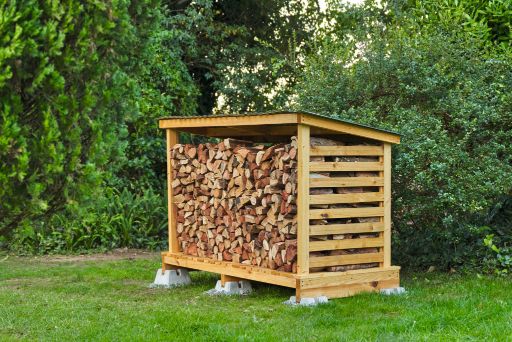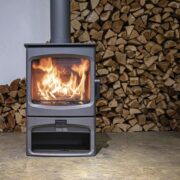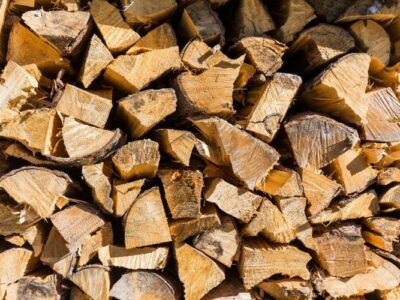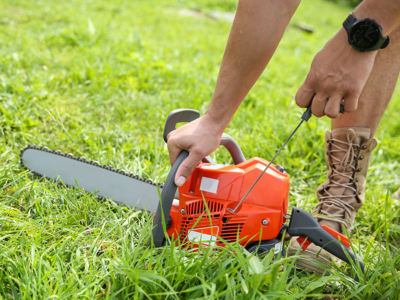The durability of wood in the face of nature’s hardest season is a topic of discussion when winter envelopes the environment in its cold grasp. Whether wood can be left outside during winter is a perennial question.
This question is crucial for those who use wood for various things, such as heating, building, or crafting. Making educated judgments regarding storage and preservation requires an understanding of how winter’s cold and erratic temperatures affect wood.
The intricate link between wood and winter is explored well for your knowledge, along with the possible dangers and workable solutions for preserving this resource.
This may even enhance people’s queries regarding wood storage and their preference for rick vs cord of wood. You will get the necessary knowledge that will guarantee that your wood survives the winter undamaged from its complexities.
Can Wood Be Left Out in Winters: Weather’s Effect on Your Wood
Due to its high hygroscopicity, wood easily takes in and excretes moisture from its surroundings. It may expand and contract when moisture content changes due to its properties.
Furthermore, because wood is susceptible to temperature changes, it might also affect the structural integrity of the material. Let’s find out how the winter weather affects the wood.

- The increasing moisture content is one of the main issues with leaving wood outside in winter. Unprotected wood can be penetrated by snow, sleet, and rain, which raises the moisture content. If the wood is saturated for a long time, the extra moisture can cause swelling or even rotting.
- Long-term contact with moisture and frigid temperatures fosters an environment that is perfect for the growth of fungus and bacteria. These microbes can hasten the degradation and rot of wood by accelerating its breakdown. Wood starts to decay, making it unusable for many purposes.
- Winter’s erratic temperature swings can increase the harm that moisture does to wood. Water that has been present in the wood expands as it freezes, perhaps generating internal tensions and damaging the material’s structure. As the wood compresses after freezing, this may result in further damage.
- Surface deterioration, frequently appearing as a greyish hue, can be brought on by exposure to cold temperatures. Long-term exposure to snow or ice can also cause the surface of the wood to erode, lowering its aesthetic value.
- The interaction of moisture absorption and temperature changes can cause the formation of cracks and splits in the wood. Stress is placed on the wood’s fibers as it expands and contracts, perhaps causing damage that is evident.
Preparations of the Wood Storage
So you know how winter’s weather may cause damage to your wood and how it can get harmed. But when you have no other choice, it is better to look for steps that could help in the wood storage for a longer time in this harsh season.

1. Provide Safe Covering
It is essential to offer sufficient protection from precipitation and close contact with snow or rain. Protect the wood from the weather by using tarps, shelters, or specially designed coverings for this purpose. The less they come in contact with the moisture, the better they will survive.
2. Keep a Check on Your Wood
Check wood that has been stored for damage regularly. You may look for warping, cracking, or discoloration. Address any problems as soon as possible to stop them from getting worse. Once damaged completely, it may not get back to its original form, so work accordingly.
3. Wood Treatment
An extra line of defense against moisture absorption can be achieved by using the proper wood sealants or treatments. These items serve to resist water and shield the surface of the wood by forming a barrier. Their usage will keep moisture far from your wood, ensuring its safety from decay.
If you have to keep the wood outside, make sure it is raised off the ground to avoid coming into touch with a soggy area. Additionally, you must ensure and encourage air movement around the woodpile to aid evaporation and lessen the possibility of moisture accumulation.
Wrapping Up
The question of whether leaving wood outside in these chilly months gets complex answers. We have already discussed how wood’s intrinsic hygroscopicity makes it vulnerable to the damaging impacts of cold weather.
Improper storage can lead to various problems, including the rotting of the wood, its decoloring and decay, and many more harmful effects.
However, one may lessen these hazards by taking deliberate action. By following the wood storage precautions and steps that we mentioned above, you will be able to increase the lifespan of the wood and ensure that the harsh weather doesn’t damage it.
This will maintain the true nature of wood and will also keep its structural integrity intact. Your wood will be able to endure the harsh effects of the winters for a long.
Frequently Asked Questions
Will Firewood Dry Outside in Winter?
Firewood will surely dry outside in winter but at a slower rate than it normally does during sunny days. As sunlight dries the moisture in the firewood, the same happens with the dry winter air. Still, the process of wood drying in winter is slower compared to summer. Also, there is less sun heat in winter, promoting its drying.
How Long Can You Store Wood Outside?
Wood can be stored outside for about two to four years. It may be stored longer, but this is considered to be the optimal time for storing wood outside. Also, if you prevent the absorption of moisture by wood, then this will greatly increase its longevity and keep the wood away from any decay.
Be sure to check out these other posts for more fascinating insights:










Comments